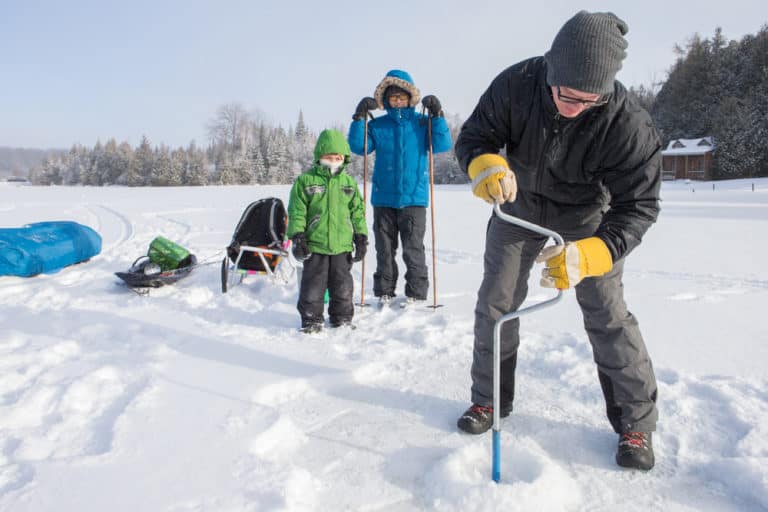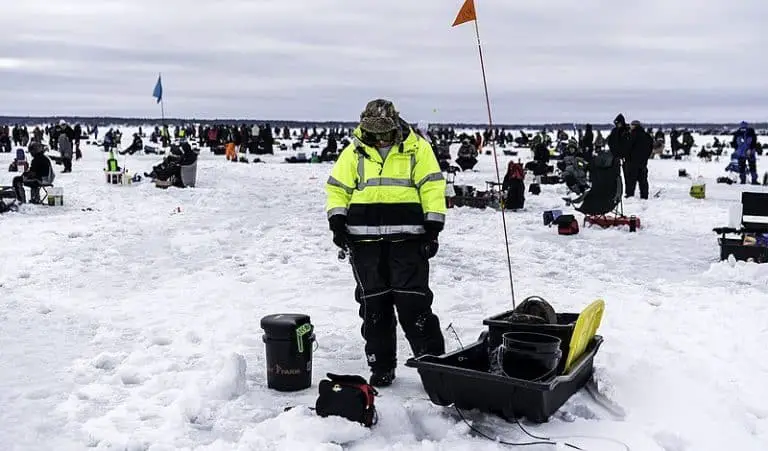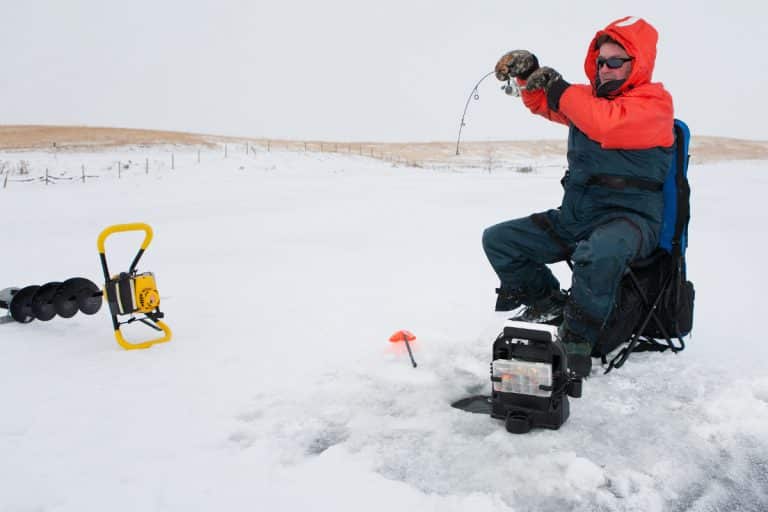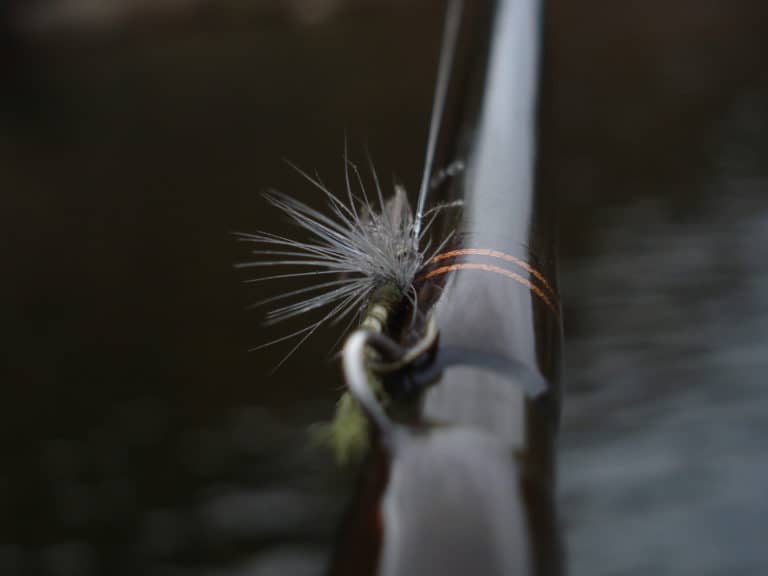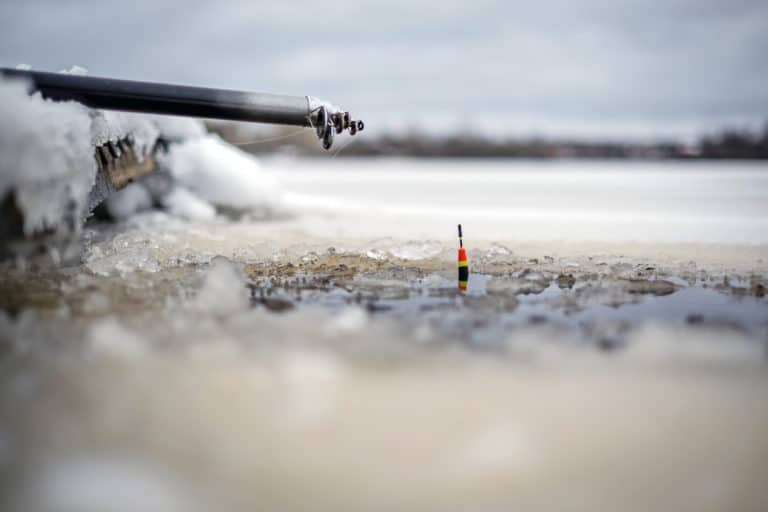Ice Fishing Tip Up Techniques / Strategy
During the winter months, you may feel like the cold and icy weather has left you with nothing to do, but you could not be further from the truth. Although wintery landscapes can be alienating and even dangerous, they can also yield plenty of opportunities to experience some fun and adventure.
From snowball fights and ice skating, there’s so much you can do when that first layer of snow has finally hit the ground.
You can even try your hand at some good old-fashioned ice fishing.
This effective method has been used by humans to catch fish in icy conditions for thousands of years and was first practiced by the native peoples of what is now the United States and Canada.
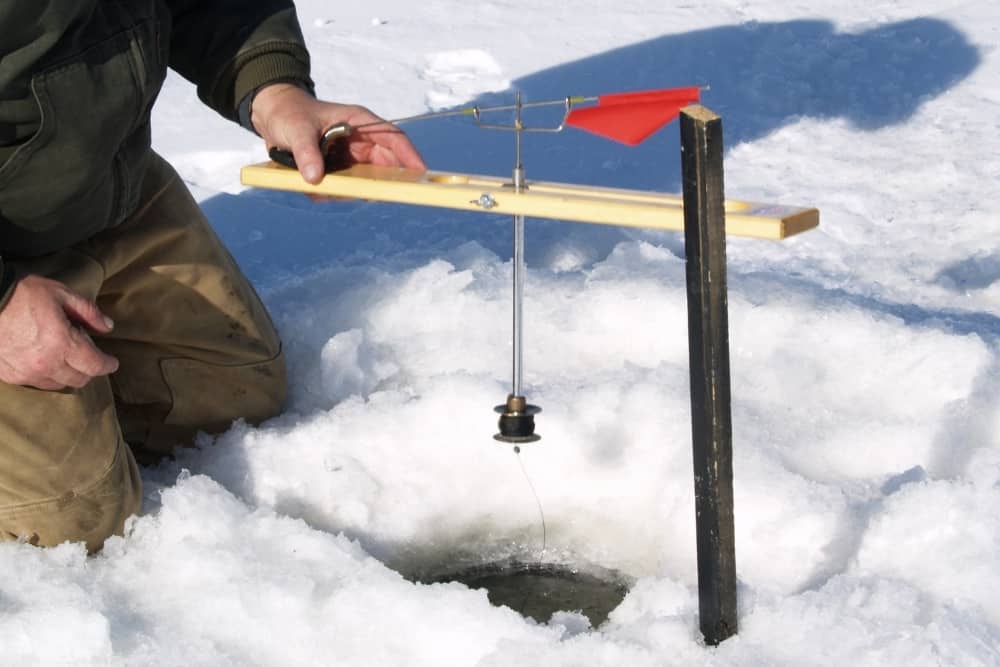
So not only is ice fishing the perfect way to experience all that the winter season has to offer, but it also brings us closer to the bygone days of the past.
But what are the most effective techniques to rig up an ice fishing tip up?
In this article, we are going to take a look at the process of how you can rig up a proper ice fishing tip up, as well as the various techniques and strategies that you can use to make your tip up and fishing experience all the more efficient and plentiful.
So why not take a look down below and learn how to ice fish today!
Table of Contents
How Can You Rig An Ice Fishing Tip Up?
When it comes to rigging up your ice fishing tip up, there are various stages that you have to complete before you can expect a successful fishing experience.
To help you understand the rigging process, we have outlined these stages down below, where you will find a step-by-step guide that covers everything you need to know about setting up your ice fishing equipment.
1. Select Your Tip Up
One of the most important parts of setting up your ice fishing equipment is finding the right tip up for your requirements. Currently, there are three varieties of tip ups that you can use for ice fishing, these include windlass tip ups, pro-thermal tip ups and hardwood tip ups.
- Windlass Tip Ups: These tip ups are operated by a small paddle that is capable of bobbing the bait up and down when it is shaken by the wind. They are also highly transportable and easy to store away.
- Pro-Thermal Tip Ups: Considered innovative pieces of fishing equipment, these tip ups can be used to cover the fishing hole, which can reduce freezing and bright sunlight scaring away the fish.
- Hardwood Tip Ups: Probably the most traditional variety on the market, these tip ups are made from wood and will usually feature a built-in crank handle, to help make the retrieving process easier.
2. Drill The Hole
The next step to the rigging process is drilling your ice fishing hole, which can be accomplished by using a tool called an auger. Currently, there are two types of auger on the market – gas-powered augers and hand-crank augers.
Which one you choose to use comes down to personal preference, although you must always make sure that your hole is no more than 12-inches in diameter, as varying hole sizes have been known to yield different fishing results.
If you are unsure of what size hole you should be drilling, then you can find your state’s ice fishing hole regulations on the internet.
3. Rig The Tip Up
Rigging the tip up can be a meticulous process and that is why we have compiled the following list of instructions:
- Spool The Line: When you have finished drilling your hole, you can begin rigging your tip up. To begin this process, you will need to take a braided or dacron ice fishing line and spool it onto your tip up.
When you have done this, you can make the tip up flag work by tying an arbor knot in the line around the tip up reel, before hand-wrapping the line in an even clockwise direction.
You have to make sure that your line is suitable for the fish you want to catch, as bigger fish will need a heavier line to be caught.
- Barrel Swivel & Leader: For the next step, you will need to attach the barrel swivel to the fishing line, which you can do by using an improved clinch knot. The barrel swivel is particularly effective because it allows the line to rotate without getting twisted.
If you intend to catch fish with sharp teeth, then you also need to attach a leader to your line. Leaders are usually made from braided steel and will stop the fish from biting through the line. For other species, you will need to use a fluorocarbon leader, as these are more difficult for the fish to see.
- Tying The Hooks: When it comes to ice fishing, the type of hook and knot you need to use usually depends on the species of fish you intend to catch. So before setting up your equipment, it is wise to research what hooks correspond to what fish.
- Attach The Split Shot: Finally, you will need to attach the split shot to your leader, as this will keep your bait weighted down. Always make sure that the split shot is far enough away from the wait to keep it under the water, but not close enough to stop it from moving.
If you want to see the rigging process in action, then you can check out this handy video on Youtube!
What Bait Do You Use On A Tip Up?
In a similar fashion to fishing hooks, the bait you use on your tip up will often vary depending on the species of fish you are intending to catch. So the bait you use will often be decided through various research and study.
However, if you intend to experience a bountiful and enjoyable ice fishing session, then there are certain baits you can use to yield the best results.
Many ice fishers will usually supply their tip ups with live bait, as this method is commonly known to attract more fish. If you intend to use live bait, then we recommend using bait such as shiners, shad and suckers.
Live minnows are also known to yield a large number of bites, however, they are not always allowed in certain states and locations.
If you are keen to attract larger fish such as pikes or musky, then live bait is a particularly effective method. However, this does not mean that dead bait can’t also promise the same stellar results.
If you find yourself in a situation where you have to use dead bait, then frozen heron or raw chicken has been known to attract larger species.
How Can You Catch More Fish On Tip Ups?
Although tip ups can be particularly effective when it comes to catching fish, sometimes they will only promise a small number of bites. So if you are keen to catch a lot more fish, it is wise to set up numerous tip-ups in the area, as they will often promise more varied and diverse results.
However, this does not mean that you can set up multiple tip ups in every fishing location you visit, as the laws concerning ice fishing will often differ depending on what state you are in.
If you are unsure about the ice fishing regulations in your area, then you can often find the information you seek online.
You can also greatly increase your chances of catching more fish by using different kinds of bait on your tip up. Not only can this result in a more varied fishing experience, but it can also clue you in on what bait is the most successful.
If a certain bait proves more popular than the others, then you can swap the bait on the tip ups so that they are all the same.
This test can also be used whenever you are fishing in a new or different location.
How Do You Set Depth On A Tip Up?
When it comes to setting the depth of your tip up, it is always best to make sure that you have the correct information. Otherwise, you could find yourself setting up your fishing equipment in an area where there are very few fish to catch.
If you want to measure the exact depth of the water, then you can effectively do this by creating your own fish finder.
To accomplish this, all you have to do is attach a one or two-ounce lead weight to your snap swivel and then allow it to fall to the bottom of the water. Once you have reached the bottom, you can mark the spot on your line using either a bobber stop or a small clip bobber.
When you have the depth measurements, then you can decide how far from the bottom of the water you want the bait to be. However, you must always make sure that you have enough space and line to easily pull up the catch.
Once you have baited your tip ups, you can use the marker to decide how far down you want your line to go.

